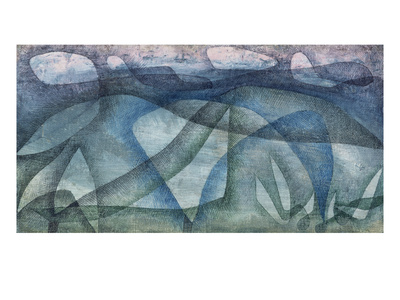Rainy Day provides a dreamy atmosphere in his abstract form
Regentag is the German word for A Rainy Day, and for German/Swiss abstract artist Paul Klee, this formation of blue colours and strange lines is how Klee saw rain in his child-like yet, some say, brilliant mind.
A quote from Paul Klee “The painter should not paint what he sees, but what will be seen”, is rather strange because an abstract painter paints entities and subjects that do not signify that of what he has painted.
Initially, he struggled to identify with colour but was smart enough to know he had to paint with colours so that the viewer’s feelings were aroused and the mood of the painting could be seen.
Klee became fascinated by colour when he visited Tunisia with two of his close friends and the blue tones depicted in this painting show the relationship he formed with colour.
The subtle lines kept him true to his draftsman beginnings. But the thin lines/drawings would change later in his career to thick and more prominent lines.
The rain falling in the Rainy Day painting is suggestive of the way his mind worked. Perhaps in a dream state he depicted the way rain fell and pushed abstract into reality with linear bringing music into the piece.
He was a firm believer that music and painting were united.
It was Klee’s grandmother that first gave him colouring pencils and encouraged him to draw and never criticised any of his work. He was a very good violinist and at 11 years old he played in an orchestra.
But he realised at an early age that when an instrument played a note you would hear the sound and then it was gone, but a painted picture was always there forever.




